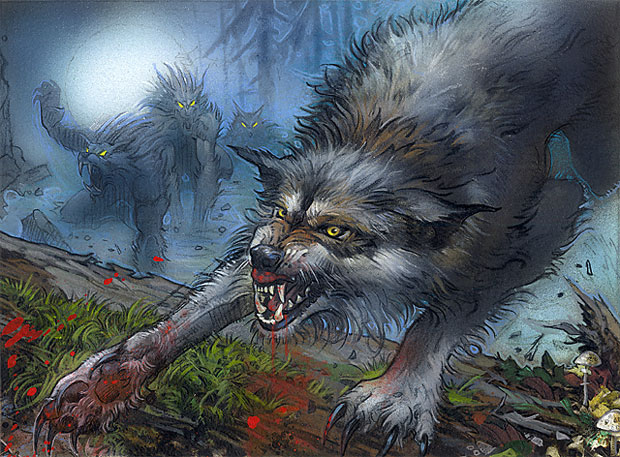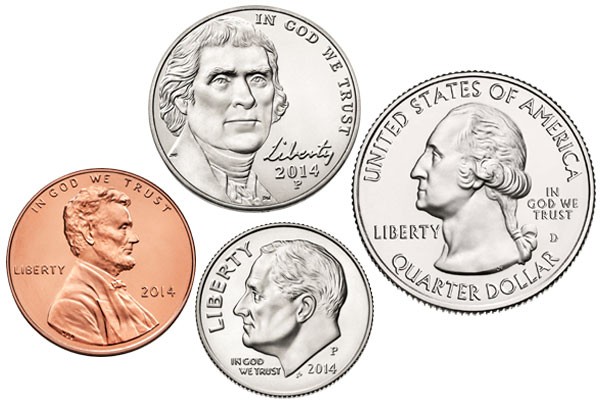Are you a Quiet Speculation member?
If not, now is a perfect time to join up! Our powerful tools, breaking-news analysis, and exclusive Discord channel will make sure you stay up to date and ahead of the curve.
Welcome back, readers!
Today's article is one that's very close to home for me. I've been buylisting at every major Grand Prix I attend for the last few years. I constantly amaze my friends with how much money I make from my buylist box. What's even more amazing (to them) is that I usually let them root through it before we leave and if they want anything at the price listed they can buy it themselves. Rarely do they take me up on the offer, but they all see what is in the box.
At the last five GPs I attended I made between $300-$550 per event, predominantly from selling cheaper cards at buylist. Usually those buylist prices are coins you'd find between your couch cushions.
For those not accustomed to US currency,
- 20 nickels = $1
- 10 dimes = $1
- 4 quarters = $1
Simple, right?
A typical white long-box is usually classified as "1000 count," but you can often fit up to 1200 cards in there. That is a lot of cards. And prices add up. For example, if you had just 900 cards (split evenly between three categories above) you would have $120 worth of cards to sell. That's not chump change. But that isn't going to get us into the $300-$500 range.
Sorting and Pricing in Advance
I typically use the following categories:
- $0.05 (nickels)
- $0.1 (dimes)
- $0.25 (quarters)
- $0.50
- $0.75
- $1
- $1.25
- $1.5
- $1.75
- $2
- $2.5
- $3
- $3.5
- $4
- $5
- Misc
I make a little divider using an extra sleeve and one of the rules cards they give you in some packs instead of a token. Then I slide in a piece of paper that lists the price for that category. Everything behind that divider will be the same price. I've had lots of stores say they really appreciate it and it can make the transaction time go from 1-2 hours down to 15 minutes.
Now that you know how I present it to the dealers, we need to know how to fill that gap between the dividers.
First it's critical to know what format the GP is. Why, you ask? Because it's expensive to travel with a lot of cards, and dealers are humans that make mistakes (like forgetting to bring certain cheap staples). Thus, dealers will forget or choose not to bring some of the cheaper cards that may take up a lot of space.
If you load up on stuff relevant to the format of the GP, dealers may be more interested in buying your cards because they can turn a quick profit instead of leaving with it as extra baggage.
Searching the Buylist
Next up is the time-consuming part.
Now that I know my price points I will then run through Trader Tools set by set using the price filter. First I run it for commons and uncommons worth $0.05 or more. These are the cards you may pick up a ton of in collections or simply acquire through drafting. I love these the most because more often than not I find cards I had no idea were in demand (because nobody asked for them locally).
Recently at GP Charlotte I discovered that Immerwolf had jumped in price and was selling for $2.50 on rampant speculation of a legendary green-red werewolf from Eldritch Moon (for the Commander players dying to build a werewolf-themed deck). The buylists at the time had it sitting at around $1.75 and I was able to sell about 30 copies.
I will make a point that being organized is a godsend while doing this. If you have your cards organized by set then you can run the quick Trader Tools filter and go through your sorted cards very efficiently. I generally stop at the set level for my organization, as I feel that sorting down to the alphabetical or even color level requires too much reorganization whenever I acquire new cards.
The other benefit of this strategy is that knowing a GP is coming up you can start sorting and pulling a week before, likely doing a few sets/blocks per day. It is much more efficient to sort through cards organized by set then to look up every card in a random box. Every "non-hit" is wasted time, whereas if you just look at a screen that highlights all the non-bulk stuff you can just pass right by the bulk and not spend time typing in the name.
Working With Dealers
Now that you've got your piles of cards nice and divided up, the next step is actually buylisting them.
I will again suggest that you let any friends or your LGS check through it. Money is money regardless of the source---keeping the cards local is a secondary benefit and you also build goodwill with friends and your LGS owner. You never know what few random cards they need to fill empty stock, but they'll remember you were the guy who helped them rebuild it.
Once you're actually on site you will only be selling to dealers (you don't want to be kicked out of a GP you traveled to by breaking the rules). So make sure you get that first part done ahead of time. There are a few important things to keep in mind when buylisting.
- The dealers tend to have the most money on the first day. This means they are usually the busiest on this day and are trying to stock up on cards they feel will sell the best (or which they have been out of awhile). This is the day you want to buylist (even if you have to spend more time in lines waiting to do so). Since you (hopefully) put an emphasis on staples relevant to the format at hand, they will likely want to pick up the stuff they didn't bring or expect to be in short supply.
- Dealers' time is valuable. They are there to buy and sell cards, so you want to make sure you're courteous and respectful. Some dealers may go through your box and want nothing (or only a few small things). It's still important to thank them for their time and for looking.
- Go to the dealers with the fewest people around them. This suggestion is only to save time waiting in line. You want to visit every dealer on site and if you're like most people you dislike waiting in line. Thus if you go to the dealers with no lines to buylist you save yourself some time.
- Write down which dealers you've visited. Some of you may have an impeccable memory and can remember everyone you've buylisted to. But with GPs having more and more dealers it's very easy to lose track (especially if you're walking between them in no particular order looking for one with no line to buylist).
- After you write down which dealers you've visited, write down how much money you made from them. This isn't necessarily to "track" them, though you certainly can. But by doing this repeatedly I actually have noticed a trend that some dealers are happier to buy these cheaper cards. As a result I like to visit them first (assuming #3 above isn't a problem) because selling quickly means I can be off doing other things later in the day, like playing side events or trading.
- Before deciding on cash or credit, browse through their cases and see if they have anything of interest. I've already written an entire article about when to take cash or credit, but you can often find hidden (i.e. underpriced) gems in most cases if you knows your prices. You can pick them up even cheaper when you consider that most dealers offer a bonus to trade in.
Conclusion
There is a lot of money to be made with the little stuff. Not only do you get to clean out some of your extra stock, you can make a good bit of money doing it. More often than not it's with cards you didn't know you had or forgot about.
I set my lower limit at a nickel, which you can obviously change based on your circumstances and inclinations. If you drop it down to a penny you will have to carry a lot more cards to make real money. On the other hand, raising it to a dime or quarter lets you make more money for less effort, but with fewer cards that fit your categories you may actually make less money in the end.






